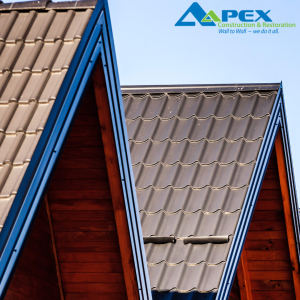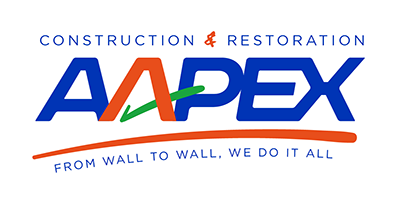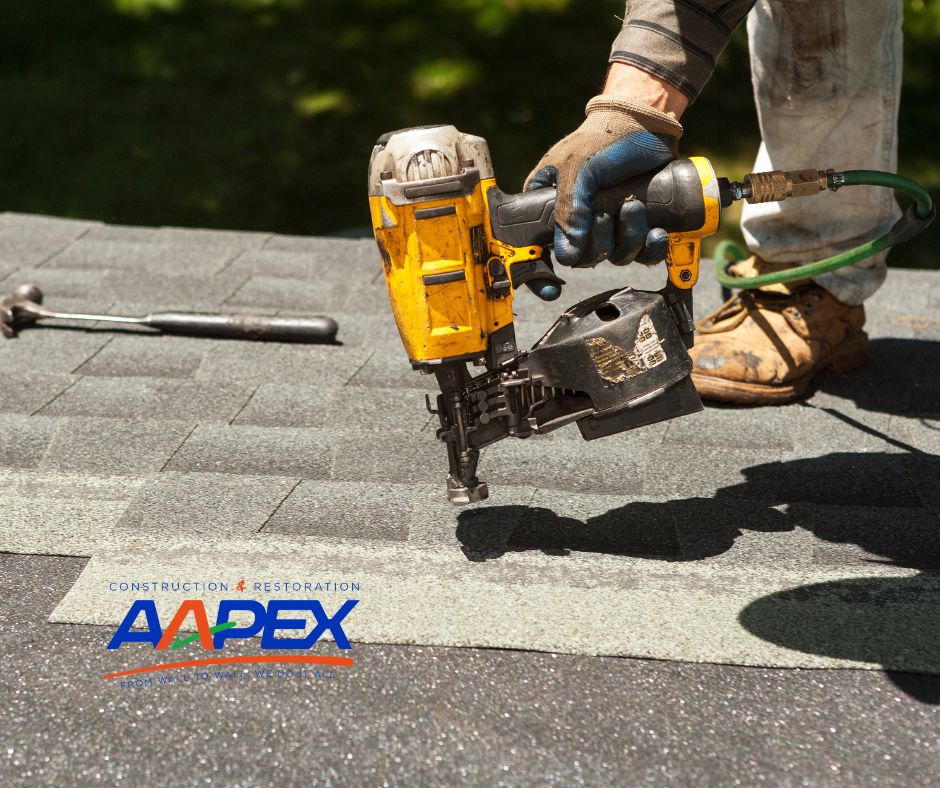All roofing materials get rated and given age ranges. The problem is shingles’ age ranges don’t always account for factors that can age that roof faster. The question is, what are these factors and how long will your roof actually last?
Life Expectancy of Shingles / Roofing Materials
- 15-30 years for asphalt shingles
- 20-50 years for composite shingles
- 30 years for modified rubber shingles
- 30-40 years for wood shingles
- 50 years for clay tiles
- 50 years for concrete tiles
- 50 years for metal roofs
- 60+ years for copper roofs
What Factors Cause a Roof to Age?
We see homeowners’ confusion when we come to give a quote on a project and they are certain that they had a 50-year roof put onto a house, but it has only been 30 and we are recommending a replacement. How does happen? There are a lot of factors that play into the life expectancy of a roof. Here are some of the major ones all homeowners should be aware of.
Material Used
 As you can see from the list above, different materials have different lifespans. A more durable material is going to be more resistant to sun exposure, severe weather, and or fire. This means they will last longer than those less resistant. Interactions with sun exposure, weather, and or fire will deteriorate the lifespan of a roof. A high-quality roof will deteriorate slower than a cheap roof under these conditions. Though, even high-quality roofs will weaken and deteriorate over time. Cheaper shingles will not last as long as expensive ones. The price range between types of shingles can be very broad for this reason. The more you’re willing to invest, the better your lifespan potential will be. If you go for the most affordable option, you’re also choosing the least reliable option. You will need to replace this option the fastest. Choosing a more costly option may seem like an investment up front but could save you money in the long run.
As you can see from the list above, different materials have different lifespans. A more durable material is going to be more resistant to sun exposure, severe weather, and or fire. This means they will last longer than those less resistant. Interactions with sun exposure, weather, and or fire will deteriorate the lifespan of a roof. A high-quality roof will deteriorate slower than a cheap roof under these conditions. Though, even high-quality roofs will weaken and deteriorate over time. Cheaper shingles will not last as long as expensive ones. The price range between types of shingles can be very broad for this reason. The more you’re willing to invest, the better your lifespan potential will be. If you go for the most affordable option, you’re also choosing the least reliable option. You will need to replace this option the fastest. Choosing a more costly option may seem like an investment up front but could save you money in the long run.
Natural Elements and Exposure
“Nature is the number one enemy of any roof.” Manufacturers create roofing materials to withstand the elements to an extent. Though no roof can avoid the inevitable wear and tear from the weather forever. Strong winds, hailstorms, and downpours are severe weather elements that take a toll on roofs. Alongside severe weather, the climate where you live can impact your roof. Warmer climates produce more sun, meaning roofs get more sun exposure. Sun exposure leads to wear and tear. Dark-colored roofs absorb more sun and heat damage due to radiation. Some roofing materials now offer UV protection which lessens this. Colder climates can also be bad for roofing. Frost, hail, snow, ice, and water stress can all weaken a roof. Winter winds can also create problems for shingles, causing them to break off and blow away. Shingles are less resistant to the weather and elements than other types of roofing.
Poor Ventilation, Insulation, and or Installation
 “Ventilation is a system of intake and exhaust that creates a flow of air.” Poor attic ventilation can and will ruin roofing from the inside. This is especially true when it comes to shingle roofs. Poor ventilation causes condensation. This makes your roof deck vulnerable to moisture damage. Insulation is a material used to stop heat, sound, or electricity from exiting or entering. Poor insulation can cause the temperature in your attic to skyrocket. Poor ventilation and insulation make regulating the temperature in your attic difficult. This can cause shingles to degrade and or break. Workmanship or installation errors are the most frequent cause of premature roof failures. “Even if you choose the highest quality roofing material on the market, installation defects can still lead to early deterioration, necessitating premature replacement.” Choosing a reliable and trained company to install your roof will solve this issue. A trained professional will ease your mind and give your roof the chance to reach its lifespan.
“Ventilation is a system of intake and exhaust that creates a flow of air.” Poor attic ventilation can and will ruin roofing from the inside. This is especially true when it comes to shingle roofs. Poor ventilation causes condensation. This makes your roof deck vulnerable to moisture damage. Insulation is a material used to stop heat, sound, or electricity from exiting or entering. Poor insulation can cause the temperature in your attic to skyrocket. Poor ventilation and insulation make regulating the temperature in your attic difficult. This can cause shingles to degrade and or break. Workmanship or installation errors are the most frequent cause of premature roof failures. “Even if you choose the highest quality roofing material on the market, installation defects can still lead to early deterioration, necessitating premature replacement.” Choosing a reliable and trained company to install your roof will solve this issue. A trained professional will ease your mind and give your roof the chance to reach its lifespan.
Maintenance
All roofing materials / shingles and systems need maintenance. It’s true some materials need less frequent maintenance. Expensive materials need less maintenance, but occasional maintenance will always need to occur. Maintenance will involve inspecting your shingles at least yearly. It will also involve trimming overhanging branches and unclogging gutters. You may also need to watch for moss, check insulation, and re-caulk if needed. When you check your roof, look for specific things.
Look for:
- lifting or missing shingles
- damaged drip edge
- buckling
- loose or missing flashing
- missing or exposed fasteners
- sagging or broken gutters
- piles of granules
These are things we want to avoid. “Not tending your roof properly means not expecting it to reach the end of its expected life span.” Not performing maintenance duties could even forego your warranty.
How Do I Know When I Need New Shingles?
You want to replace your roofing material before it starts to leak. If your roof suffers significant damage from severe weather, it’s a good time to replace the roof. If your roof is sagging this is a sign that your roof has moisture inside of it. This moisture will ruin your roof’s structure, especially the lowest points. A lot of mold or fungi build up also means there’s moisture trapped. This calls for a replacement immediately. If you’ve made it to the end of your roof’s average expected lifespan, you should replace it even if it still looks good. An aged roof will fail, which would lead to potential repairs and money loss.
So, How Long Will My Roofing Shingles Actually Last?
Your roof can last anywhere from 15-60+ years and that lifespan can depend on many factors. Quality of materials, reliability of contractors, maintenance, and climates will affect that lifespan. Investing time and money in choosing a contractor will give your roof the best chance. The more you invest, the better quality your roof will be and the longer it will last. Choosing expensive materials may seem more costly in the beginning but could be worth it in the long run. They often have longer lifespans and need to be replaced less often. Choosing a trained professional to install will ensure your roof is strong. Maintaining and monitoring your roof will help you catch and stop problems as they occur.
To conclude:
All roofing shingles will weaken and age, even the best ones. This means your roof will need to be replaced at one point or another. When it does, we’re here to offer you our trained roofing services. We include the registered product warranty. We’ll also back that with our 10-year or Lifetime warranty of workmanship. Is your roof damaged and in need of a replacement? Are you looking to upgrade soon? Either way, we’re here to help you weigh out the options and make the best choice for your new roof. Contact us today to get a quote or learn more about our roofing services!


